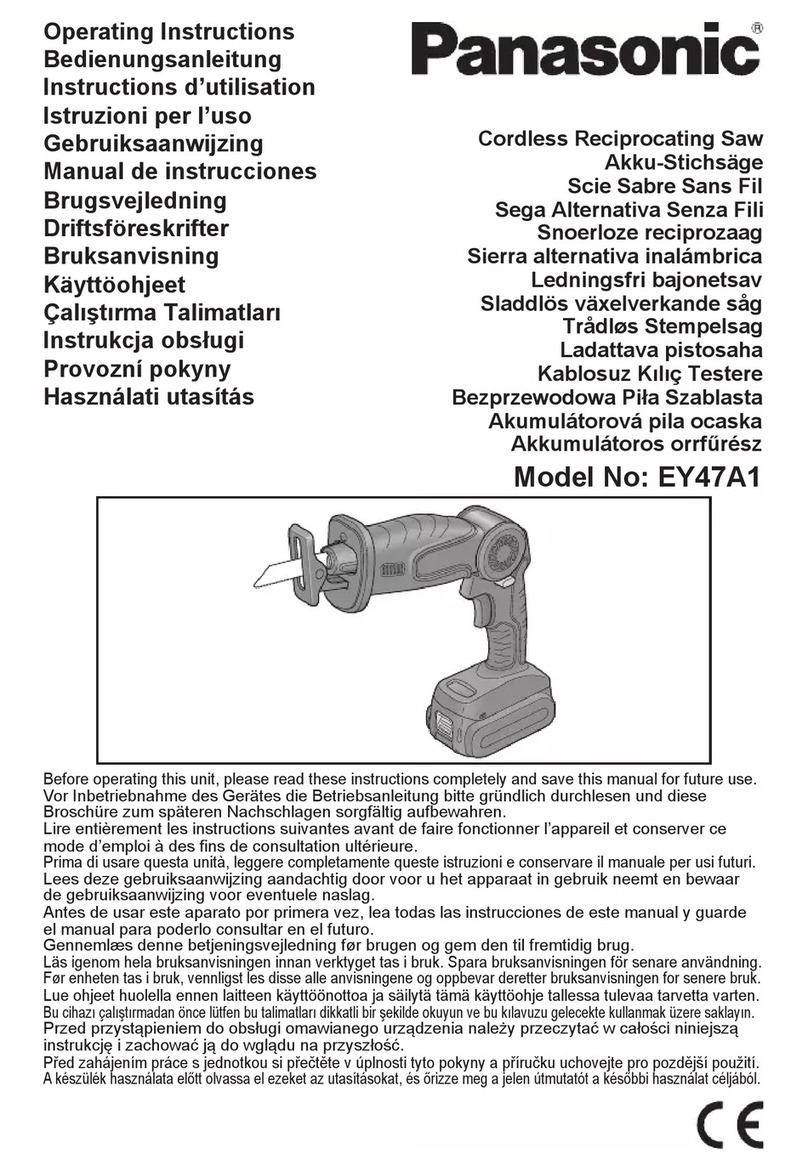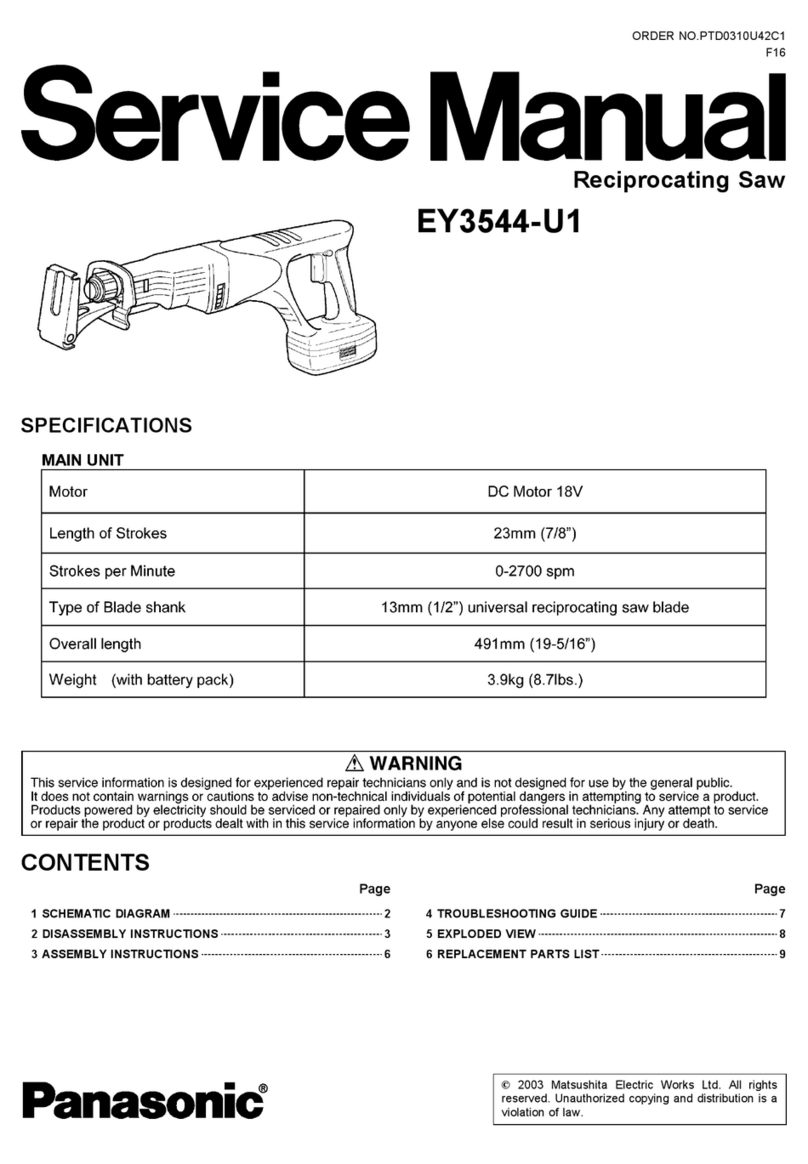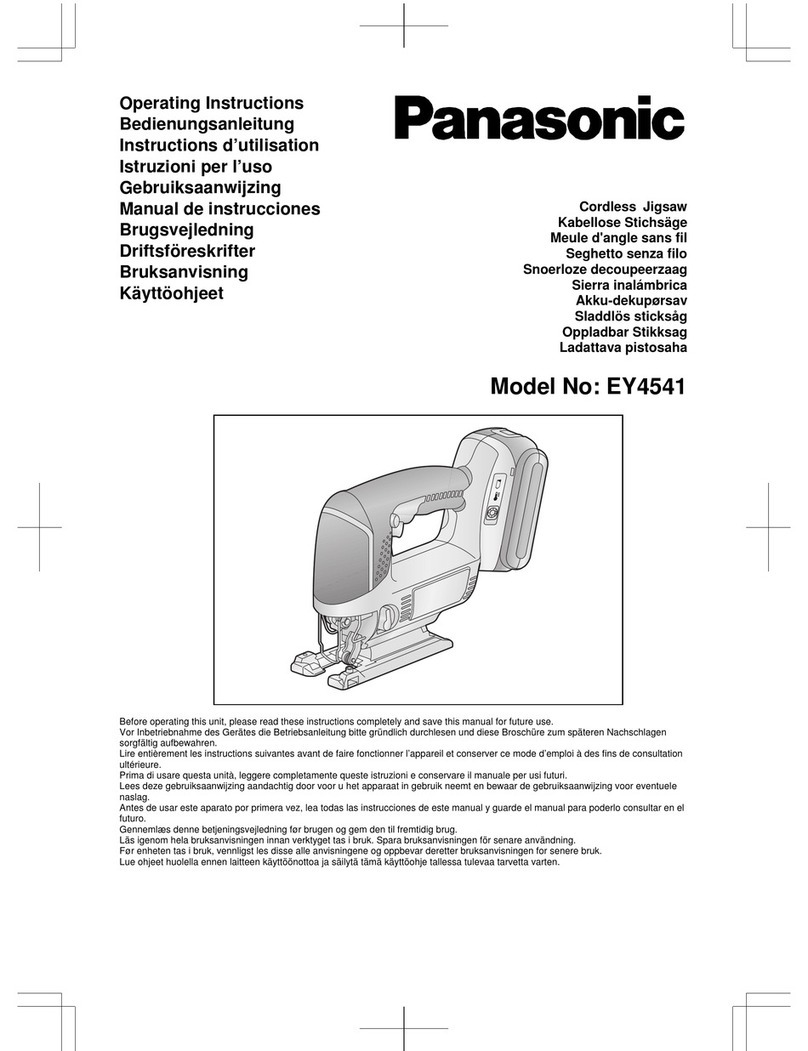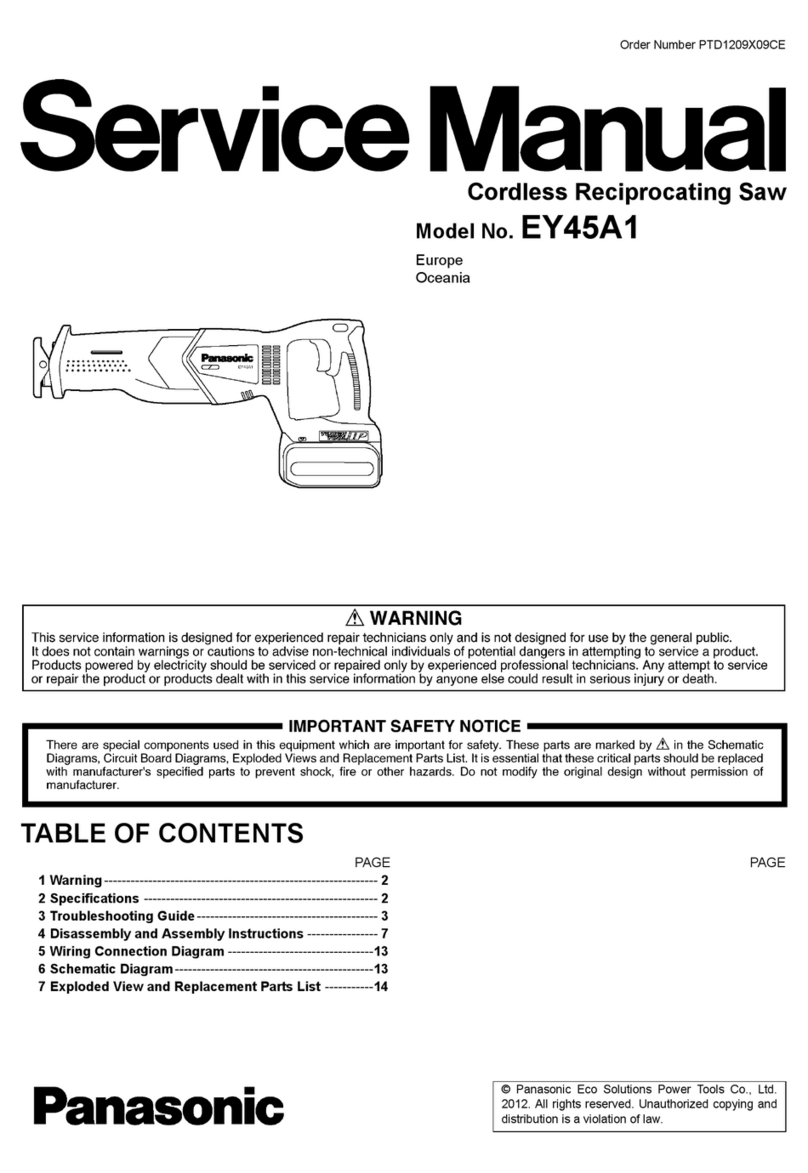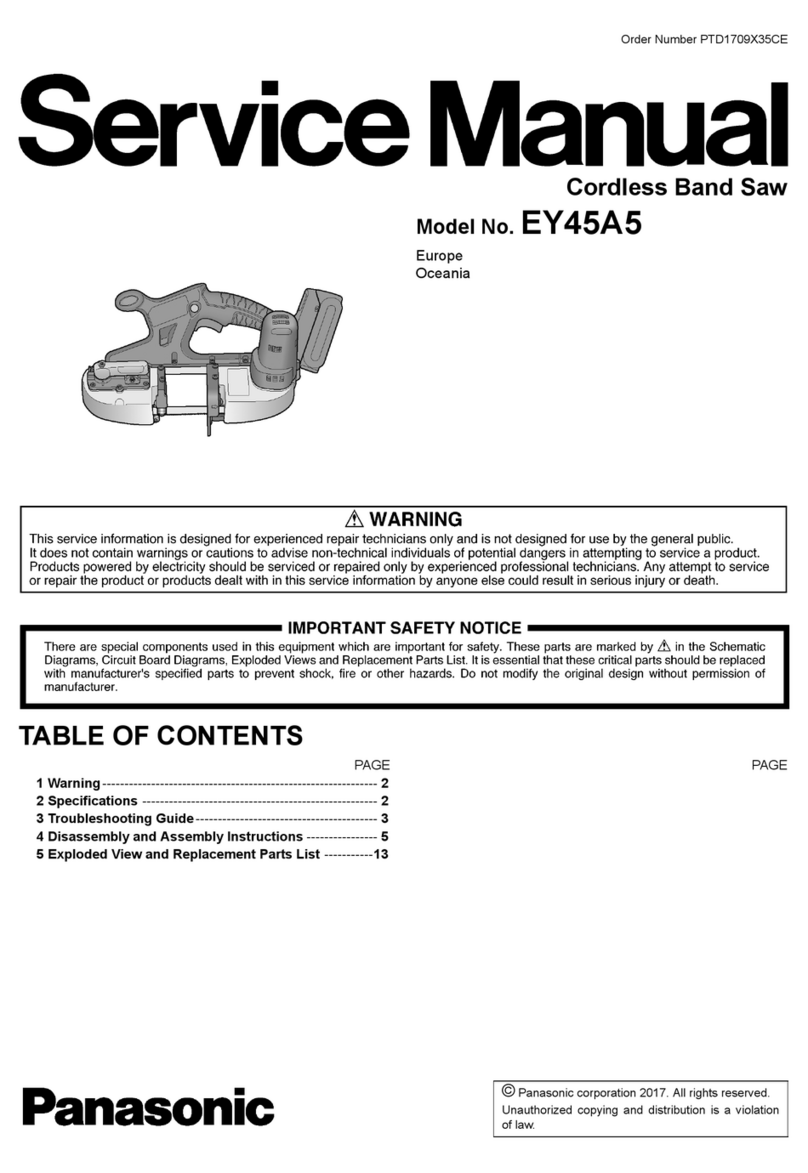Further safety instruc-
tions for all saws
Causes and operator prevention of kickback:
- kickback is a sudden reaction to a pinched,
bound or misaligned saw blade, causing an
uncontrolled saw to lift up and out of the work-
piece toward the operator;
- when the blade is pinched or bound tightly
by the kerf closing down, the blade stalls and
the motor reaction drives the unit rapidly back
toward the operator;
- if the blade becomes twisted or misaligned
in the cut, the teeth at the back edge of the
blade can dig into the top surface of the wood
causing the blade to climb out of the kerf and
jump back toward the operator.
Kickback is the result of saw misuse and/or incor-
rect operating procedures or conditions and can
be avoided by taking proper precautions as given
below.
1) Maintain a firm grip with both hands on the
saw and position your arms to resist kick-
back forces. Position your body to either
side of the blade, but not in line with the
blade.
Kickback could cause the saw to jump back-
wards, but kickback forces can be controlled
by the operator, if proper precautions are
taken.
2) When blade is binding, or when interrupt-
ing a cut for any reason, release the trig-
ger and hold the saw motionless in the
material until the blade comes to a com-
plete stop. Never attempt to remove the
saw from the work or pull the saw back-
ward while the blade is in motion or kick-
back may occur.
Investigate and take corrective actions to elim-
inate the cause of blade binding.
3) When restarting a saw in the workpiece,
centre the saw blade in the kerf and check
that saw teeth are not engaged into the
material.
If saw blade is binding, it may walk up or kick-
back from the workpiece as the saw is restarted.
4) Support large panels to minimize the risk
of blade pinching and kickback.
Large panels tend to sag under their own
weight. Supports must be placed under the
panel on both sides, near the line of cut and
near the edge of the panel.
5) Do not use dull or damaged blades.
Unsharpened or improperly set blades pro-
duce narrow kerf causing excessive friction,
blade binding and kickback.
6) Blade depth and bevel adjusting locking
levers must be tight and secure before
making cut.
If blade adjustment shifts while cutting, it may
cause binding and kickback.
7) Use extra caution when making a “plunge
cut” into existing walls or other blind
areas.
The protruding blade may cut objects that can
cause kickback.
Safety instructions for
this saw
1) Check lower guard for proper closing
before each use. Do not operate the saw if
lower guard does not move freely and close
instantly. Never clamp or tie the lower guard
into the open position.
If saw is accidentally dropped, lower guard
may be bent. Raise the lower guard with
the Lower Guard Lift Lever and make sure it
moves freely and does not touch the blade or
any other part, in all angles and depths of cut.
2) Check the operation of the lower guard
spring. If the guard and the spring are not
operating properly, they must be serviced
before use.
Lower guard may operate sluggishly due to
damaged parts, gummy deposits, or a build-
up of debris.
3) Lower guard should be retracted manually
only for special cuts such as “plunge cuts”
and “compound cuts.” Raise lower guard
by Lower Guard Lift Lever and as soon as
blade enters the material, the lower guard
must be released.
For all other sawing, the lower guard should
operate automatically.
4) Always observe that the lower guard is
covering the blade before placing saw
down on bench or floor.
An unprotected, coasting blade will cause the
saw to walk backwards, cutting whatever is in
its path. Be aware of the time it takes for the
blade to stop after switch is released.
5) Do not use any abrasive wheels.
6) Wear a dust mask, if the work causes dust.
7) Use saw blades recommended by Manu-
facture.
8) Wear ear protectors when using the tool for
extended periods.
9) The risk of kickback increases as the bat-
tery pack discharges.
10) Be sure to inspect material. Avoid cutting
bolts, nails or other different material.
